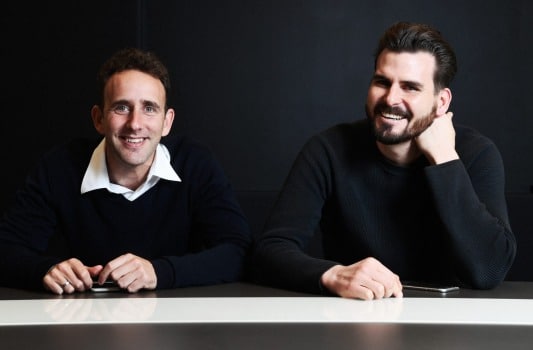
Beginning the process of human resource planning needs careful attention because when it’s done well, human resource forward thinking is a valuable process which will ensure that the employees you currently have, match well with the tasks which need attention, integrate into your company and culture, and feel at home. Also known as workforce planning, human resource planning is about matching your people to your overall business objectives.
Properly managed human resource planning goes beyond the now and forecasts future labour demands within an organisation. It’s a continuous process of systematic planning which takes place to help an organisation achieve the best use of their workforce.
Human resource planning comprises 4 comprehensive steps
When creating a human resources plan, these are the main considerations for any HR professional. The five steps which are integral in any human resource planning are all important but one of them is vital. That point is forecasting demand. Without covering one of the steps, you cannot achieve the overall goals of the strategy. Start with broader goals, narrow them down to strategies, evaluate your business, and build a workforce that will grow alongside your business.
Before getting results, businesses need not only a clear picture of their company but a good understanding of several other factors before they can put their plan into action.
Think about this in actionable terms. If your company currently has fifty employees but you expect to double in size over the next five years, how will you maintain your culture? How will you encourage an atmosphere of learning and growth? Can your staff keep up with the technological changes and your company objectives of the future?
Step 1: Analyse company objectives and HR needs
What gives one company a record of success with human resources while others do not have a strong reputation? Much of this is due to a strategic planning effort on the part of the organisation.
Strategic aims within an organisation must be aligned to human resources practices in order to ensure that a human resources plan is as effective as it can possibly be. For example, FedEx is a corporation with a track record of success in their industry and among customers. They obtained this reputation with a clear focus on strategic aims. They even follow the philosophy “People-Service-Profit” for every employee, customer, and stakeholder. Employees are trained to follow this philosophy and their feedback is collecting annually for consideration.
Moving forward with analysing your company objectives next to HR needs involves asking yourself some questions. It also should include C-suite executives, managers, and HR team members. Questions to ask include what growth or decline is expected? How might this impact the workforce? What are predicted sales for the forthcoming year?
Goals need to be shared; CEOs should be on the same page as HR professionals so that the focus on human resources is fully embraced by all of the people involved in the planning. Some ways to invest all people in the creation of the strategic plan include:
- Incentivising staff members to give honest opinions
- Allowing an open forum between staff members at different organisational levels
- Reverting back to the mission statement or vision in all organisational goals
- Focusing on the expected growth of the business
The human resources plan should cover every part of a businesses from sales to expansion, from recruitment to training. An excellent way to ensure that everyone is on the same page is to implement a strategic plan for human resources to utilise.
This plan should include factors such as upcoming retirements, staff who will be undertaking further training which will advance their skills and any other factors which will affect the future of your workforce.
ACTION – Create a strategic plan for HR and ensure it aligns with company objectives. Consider using cloud-based HR solutions to centralise and save valuable time.
Step 2: Determine recruiting strategy and evaluate current human resources
Recruitment strategy is a powerful tool when well implemented. Consider Starbucks; this is a company ranked at 120 on 2022’s Fortune 500 and with projected growth of global and U.S. comparable store sales between 7% and 9% year over year until 2025.
How does a company this massive, even begin to successfully manage their human resource plans?
A vital aspect for Starbucks is their recruitment strategy which targets potential employees who are ‘on-brand’ and who pass a carefully structured interview process. Starbucks also puts a lot of energy into employees’ well-being and as a result, the company has an extremely low turnover in staff. Their somewhat unusual practices are working extraordinarily well and have been for many years.
Starbucks is a large company with operating goals that are a struggle to implement. Yet, they focus on their goals and design targeted programs which eventually lead to the desired result. By treating people as their biggest resource, Starbucks has lowered their employee turnover while building a booming brand.
You can begin by looking at the number of people currently employed, taking into account their skills and potential for future development, you should be able to determine which positions will need to be filled in future. Creating a profile for your ‘ideal employee’ which covers the gamut of openings within your business will also ensure your staff turnover is lowered.
Digitising employee onboarding can be a powerful way to not only cut the costs of recruitment, retention and management, but can also help your employees to feel more empowered and engaged.
Also consider which jobs will be created or phased out, how can the new positions best be filled? A performance evaluation strategy can help here as you review your employees’ performances. Cost-effectiveness of external hiring depends on the position you are filling, your current workforce, and required training costs for your team.
Once your plan is in place you can implement the best options for recruiting the best people for future gaps in the workforce. Hiring before the skills are highly sought out can get you ahead of the competition with employee selection. Always look internally at the potential growth of your current employees.
ACTION – Create a performance evaluation strategy and implement it across the organisation.
Step 3: Predict need
This is the practice of estimation. Looking at the potential numbers of future employees in an organisation and ensuring that they are of the best quality. The well documented worker shortage continues, and employers need to consider their recruitment strategy carefully.
It’s not an exact art. There is some estimation involved and because of this, it’s quite challenging. Gathering the data needed to predict the future of your workforce is tricky in itself and involves both statistical data and ordinary observation. Utilise data you already have access to including predicted sales and slumps. A few established ways to predict need would be to:
- Check out industry trends
- Track the economic forecast for your product and country
- Assess company sales and historical growth numbers
- Know the common trends that occur within your individual sales cycle
ACTION – Gather statistical data to predict the future staffing needs of the business
Step 4: Planning training and development
The previous steps will show you where, if at all, there are gaps. Will there be skills shortages within your workforce? Do you need to implement training for certain individuals now to ensure that you have the right workforce in place at the right time? Upcoming retirements for example can necessitate further training for individuals on lower rungs. This also serves as an opportunity to develop some of your more stellar, but lower-level staff members.
Some changes can’t be predicted; long-term illness for example and employees changing careers or the shifting needs of their families can all impact your team but there’s no effective way to predict these changes. You can however forecast some variables and these should be carried out with care.
Ensure that you keep records of the skills your workforce currently have and update them as the staff receive further training and development. It is also worth preparing for future skills needed in your sector. An aspect of Human Resource planning would be to invest in the proper training of staff, enabling your team to feel confident in spearheading programs, and building a business able to handle the future. Knowing the current gaps in your workforce can propel you toward a fully-prepared future.
ACTION – Carry out strategic forecasting to ensure that the company is well prepared for future changes.
Step 5: Build out your EVP
As the employment landscape becomes more competitive, and the fight to attract and retain workers is subject to a range of post-pandemic economic pressures, companies need to consider what matters most to their potential hires. Companies with a strong employee value proposition (EVP) seek to identify and align with their employees’ needs and values across workplace benefits including flexible working, career development opportunities, competitive salaries, and expanded benefits packages.
- Using an EVP in job postings At a time when digital portals are clogged with posts and offers, strategically including your EVP in your job ads can help you stand out from the competition. Begin with language that talks about your company’s unique culture, values, and benefits. This can help job seekers understand what makes the company different and why they should want to work there.
- Mastering job ads Structure, placement and guidelines that work Job boards don’t just randomly post ads on their platform — they consider many different factors when deciding where (and how far up the page) to place them. And, although there may be some differences from site to site, the following elements constitute best practice.
- Syndicated content Digital content syndication is a powerful way to get brand cut-through with your EVP. It involves distributing or republishing your own content like articles, blog posts, videos or infographics through third-party websites, social media platforms and other channels. Digital content syndication can expand your reach and attract new audiences, all while showcasing your unique value proposition and building brand awareness. Content syndication can also position your brand as a thought leader in your industry — something that can be leveraged for both sales and talent acquisition.
- Novated leasing as a pay boost Emerging businesses don’t necessarily have the budget to spend on meal services and other costly benefits that have traditionally acted as drawcards for employees at larger companies. But novated leases, FBT-exempt mobile phones, employee discounts at local stores and other in-kind benefits can increase pay packages for your employees and potentially save you money on payroll tax. These benefits are meaningful ways to reduce the out-of-pocket expenses of your employees, especially during times of inflation and financial stress. Novated leasing in particular allows employees to lease a car for private use, with payments deducted from their pre-tax salary. This helps employees save money on their private vehicle expenses while supporting their work-life balance. What’s more, employers can benefit from novated leasing by claiming GST on most associated running costs.
ACTION – Build out your EVP with our free cheat codes.











